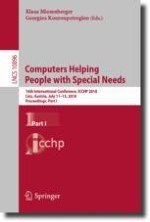1 Introduction
2 Exemplary Application Area
3 The System
4 Emotional Speech Data Collection
5 Automatic Speech and Emotion Recognition
Class distribution | ComParE + SVM | BoAW + SVM | Fusion | ||||||||
|---|---|---|---|---|---|---|---|---|---|---|---|
Train. | Devel. | Test | \(\varSigma \) | C | Devel. | Test | CS | Devel. | Test | Test | |
A | 125 | 50 | 272 | 447 | \(10^{-6}\) | 34.2 | 41.3 | 250 | 38.7 | 36.4 | 43.4 |
H | 743 | 965 | 650 | 2 358 | \(10^{-5}\) | 37.8 | 43.1 | 500 | 40.5 | 36.5 | |
N | 2 287 | 2 842 | 2 024 | 7 153 | \(10^{-4}\) | 28.2 | 38.4 | \(1\,000\) | 39.8 | 38.1 | |
S | 187 | 329 | 153 | 669 | \(10^{-3}\) | 29.9 | 35.4 | \(2\,000\) | 38.1 | 41.3 | |
\(\varSigma \) | 3 342 | 4 186 | 3 099 | 10 627 | \(10^{-2}\) | 29.9 | 33.1 | \(4\,000\) | 37.9 | 39.2 | |
